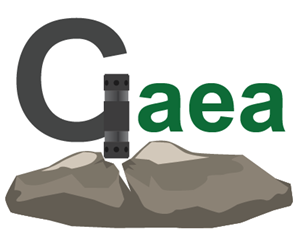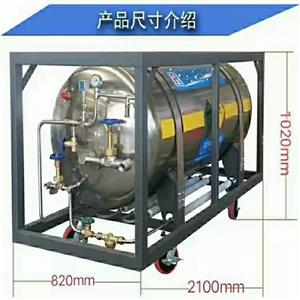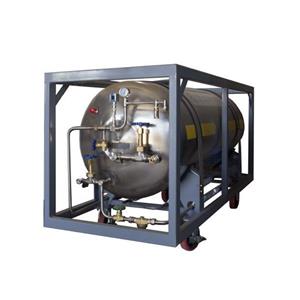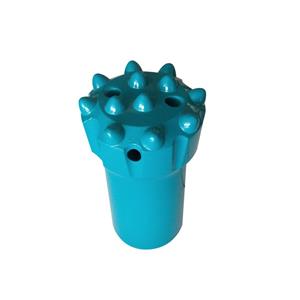Overview, principle and application of rock drill rig
Related products Link:
Overview:
Rock drill rig is a tool used to directly mine stone. It drills blastholes in the rock formations so that explosives can be put in to blast the rocks, thereby completing stone mining or other stonework projects. In addition, the rock drill rig can also be used as a breaker to break hard layers such as concrete. According to their power source, rock drills rig can be divided into four categories: pneumatic rock drills machine, internal combustion rock drills, electric rock drills and hydraulic rock drills.
Working principle:
The rock drill works according to the principle of impact and crushing. When working, the piston makes high-frequency reciprocating motion, constantly impacting the shank. Under the action of the impact force, the sharp wedge-shaped drill bit crushes the rock and digs into a certain depth, forming a dent. After the piston retreats, the drill rotates through a certain angle, the piston moves forward, and when it hits the drill tail again, a new dent is formed. The fan-shaped rock block between the two dents is sheared by the horizontal force generated on the drill bit. The piston continuously impacts the drill tail and continuously inputs compressed air or pressurized water from the center hole of the drill to discharge the slag out of the hole, forming a circular borehole with a certain depth.
Application:
No matter in high mountains or flat ground; no matter in the extreme heat of +40°C or severe cold area of -40°C, it can work. The rock drill has various types of splitting and crushing such as mining and drilling, construction, cement pavement, asphalt pavement, etc. , Tamping, shoveling and other functions, widely used in mining, construction, fire protection, geological prospecting, road construction, quarrying, construction, national defense projects, etc.
Classification:
According to their power source, rock drills can be divided into four categories: pneumatic rock drills, internal combustion rock drills, electric rock drills and hydraulic rock drills.
Selection Guide:
The first is the aperture. The larger the aperture, the larger the model of the rock drill.
Then there is rock hardness. The higher the hardness, the higher the impact energy and power of the rock drill.
The drilling direction determines the different support methods you choose for the rock drill, including hand-held, outriggers, guide rails, and upwards. There are also pressure sources, which are divided into pneumatic and hydraulic. The pneumatic ones are generally small, light, low in power, low in efficiency, suitable for small holes, and the rock hardness is medium and low; the hydraulic ones are generally relatively large.
The pneumatic rock drill uses compressed air to drive the piston forward in the cylinder to make the steel drill hammer the rock, which is the most widely used.
The electric rock drill is driven by the electric motor through the crank connecting rod mechanism to drive the hammer head to impact the steel drill and chisel the rock. The powder discharge mechanism is used to discharge the stone chips. The internal combustion type uses the principle of the internal combustion engine to drive the piston to impact the steel drill and gouge the rock through the explosive force of gasoline. It is suitable for construction sites without power source and air source.
The hydraulic rock drill relies on hydraulic pressure to impact the steel drill through the inert gas and the impact body to drill the rock. When the impact mechanism of these rock drills returns, the turning mechanism forces the steel drill to rotate at an angle, so that the drill bit changes its position and continues to drill the rock. The explosive force of the diesel fuel drives the piston to impact the steel drill, so that it continuously impacts and rotates, and uses the powder discharging mechanism to discharge the stone chips, which can be drilled into a blast hole. As one of the important engineering equipment, hydraulic rock drills are indispensable in the construction of mines, highways, buildings and other fields. However, with the continuous development of the rock drill industry, domestically produced hydraulic rock drills are still in low efficiency, some structures and parts have short service life, and there is no vibration damping device in the working process, resulting in high vibration and low energy transmission efficiency. The internal combustion rock drill does not need to replace the internal parts of the head, just move the handle as required to operate. It is easy to operate, more time-saving, labor-saving, and has the characteristics of fast chiseling speed and high efficiency. Drilling holes in the rock can be drilled vertically downwards and horizontally upwards less than 45° and the deepest vertical downwards is up to six meters. It can work in high mountains, flat land, in the extreme heat of 40° or the severe cold area of minus 40°. This machine has a wide range of adaptability.
The internal combustion rock drill has various functions such as splitting, crushing, tamping, shoveling, etc. for mining, construction, cement pavement, asphalt pavement, etc. It is widely used in mines, construction, fire fighting, geological prospecting, road construction, quarrying, etc. Construction, defense engineering, etc.
Maintenance:
Problems that should be paid attention to in the maintenance and maintenance of rock drills
(1) Before using the new machine, disassemble and clean the internal parts and remove the anti-rust oil. When reassembling, lubricate the mating surfaces. It is necessary to blow off the dirt in the air supply pipe and joints with compressed air to prevent it from entering the machine and wearing parts.
(2) Check whether the shape and length of the shank tail, the size and depth of the water needle hole meet the requirements; whether the center hole is unblocked. If the shank tail is "piled" or cracked, it should be replaced in time according to the situation.
(3) Supply wind or water to the water needle of the rock drill and observe whether it is unblocked. Do not drill dry, and do not remove the water needle to avoid damage to the valve sleeve.
(4) Always carefully check whether the joints are tight, whether the intake elbow is stuck firmly, and whether the operating handles are reliable and flexible, so as not to loosen the parts and hurt people, or affect the normal operation of the machine.
(5) Before operating the rock drill, the oil injector should be filled with lubricating oil and the oil volume should be adjusted. Fill the lubricator with oil once every 1h during work, and do not work without lubricating oil. For floor-standing oilers, attention must be paid to whether the installation direction is correct.
(6) After the drilling is completed, the water pipe must be removed first, and the machine must be operated lightly, and the remaining water droplets in the machine should be blown out to avoid corrosion of internal parts; then the rock drill and the air leg should be placed in a safe and clean place to prevent damage during the shooting.
(7) Special personnel should be assigned to overhaul. After get off work, carefully check whether the parts are damaged, and repair them in time if they fail.
(8) When dealing with faults or repairing rock drills underground, it should not be carried out on the tunneling face, but should be carried out in the underground repair department with better conditions.
(9) When used machines and tools need to be stored for a long time, they should be disassembled and cleaned and sealed with oil.

Precautions:
1. Before rock drilling, check the integrity and rotation of all components (including rock drills, supports or rock drilling rigs), add necessary lubricating oil, check whether the air path, the water path are unblocked, and whether the connection joints are firm.
2. Knock the roof near the working face, that is, check the roof and the second bank near the working face for live rock and turquoise, and make necessary treatments.
3. The blasthole position of the working face should be leveled before drilling to prevent slippage or displacement of the blasthole.
4. It is strictly forbidden to drill dry holes, and we must insist on wet rock drilling. When operating, start the water first, then open the wind, and turn off the wind and then the water when stopping the drilling. When opening the eyes, run at low speed first, and then drill at full speed after drilling to a certain depth.
5. Personnel supporting drills are not allowed to wear gloves when drilling.
6. When using air legs to drill, pay attention to the standing posture and position, never rely on the body to pressurize, let alone stand under the drill rod in front of the rock drill to prevent the drill from breaking and hurting people.
7. When abnormal sound is found in rock drilling, and the powder and water are abnormal, the machine should be shut down and checked, and the cause can be found and eliminated before drilling can be continued.
8. When exiting the rock drill or replacing the drill rod, the rock drill can be operated at a slow speed. Pay attention to the position of the steel drill of the rock drill to avoid the automatic fall of the drill rod and hurt people, and close the gas path in time.
9. When using the air-leg rock drill to drill rock, the top must be firmly secured to prevent the top from slipping and hurting people.
10. When using the upward-type rock drill to shrink the bracket, the drill rod must be held to prevent the drill rod from falling automatically and hurting people.
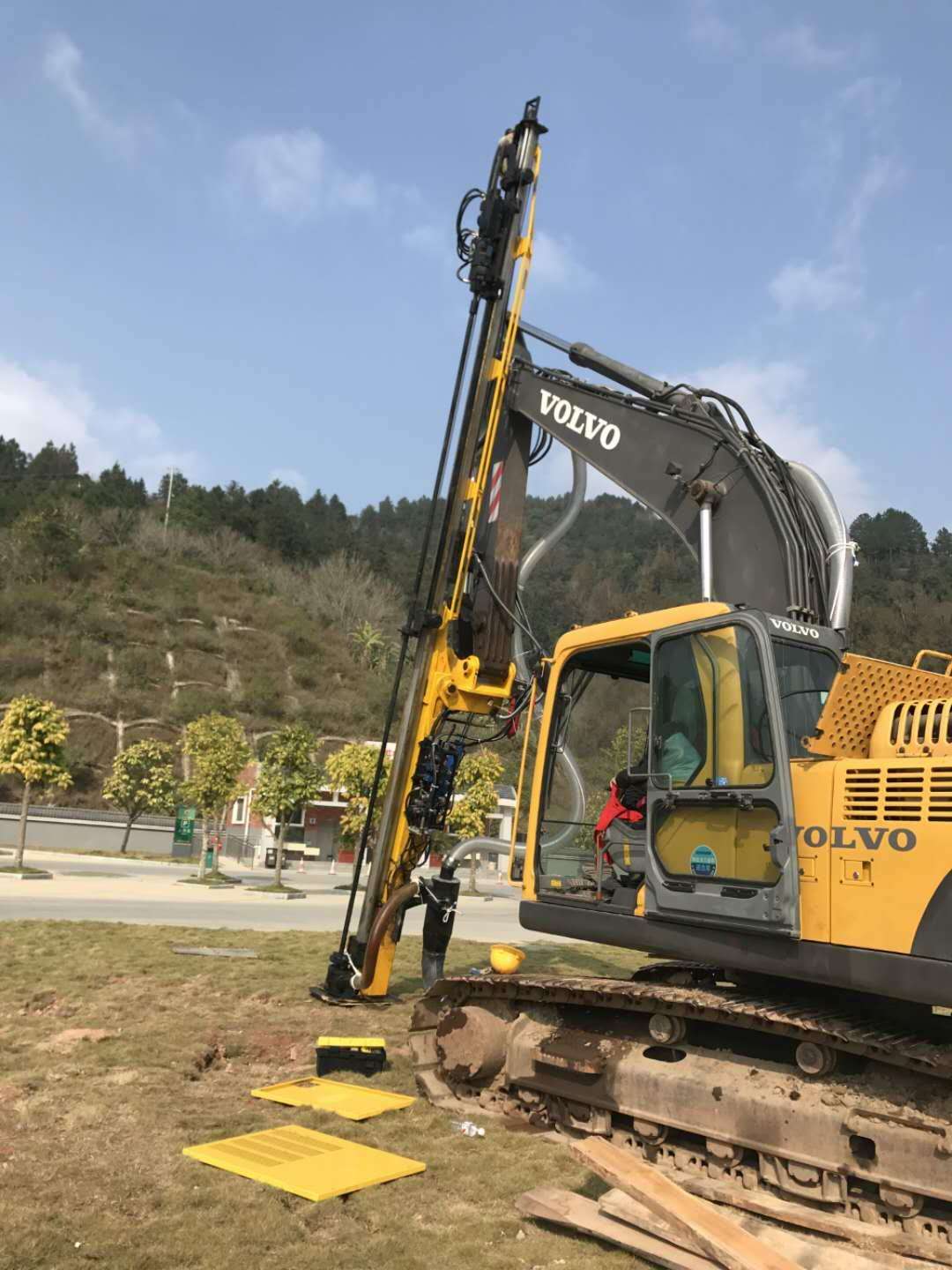
Troubleshooting:
The common faults of rock drills and their treatment methods are as follows
1. Decrease in rock drilling speed
(1) Causes of failure: First, low working air pressure; second, poor expansion of the air legs, insufficient thrust, and jumping back of the fuselage; third, insufficient lubricating oil; fourth, flushing water flowing into the lubrication part; fifth, icing of the muffler cover, Affect the exhaust; sixth, the main parts wear out of limit; seventh, the phenomenon of "washing hammer" occurs.
(2) Elimination measures: First, adjust the pipeline, eliminate air leakage, increase the diameter of the air supply pipe, and reduce air consumption equipment; second, adjust the installation angle of the air leg, check whether the sealing ring of each part of the air leg is in good condition, the handle body handle and the trigger And whether the reversing valve is lost, damaged or stuck; the third is to add oil to the lubricator, replace the contaminated lubricating oil, clean or blow through the small holes in the oil circuit; fourth, replace the broken water needle, and replace the drill that blocks the center hole Rod, reduce the water pressure, and check the water injection system; the fifth is to knock off the condensed ice; the sixth is to replace the worn out parts in time; the seventh is to reduce the water pressure and repair the water injection system.
2. The water needle is broken
(1) Causes of failure: First, the small end of the piston is severely piled or the center hole of the shank is not right; second, the clearance between the shank and the hexagonal sleeve is too large; the third is that the water needle is too long; the fourth is that the depth of the shank is too shallow.
(2) Elimination measures: First, replace in time; second, replace when the opposite side of the hexagonal sleeve wears to 25mm; third, trim the length of the water needle; fourth, deepen it according to regulations.
3. Failure of air-water linkage mechanism
(1) Causes of failure: First, the water pressure is too high; second, the air or water circuit is blocked; third, the parts in the water injection valve body are rusted; fourth, the spring of the water injection valve is fatigued; fifth, the sealing ring is damaged.
(2) Elimination measures: One is to appropriately reduce the water pressure; the other is to clear the air or water path in time; the third is to clear the corrosion or replace; the fourth is to replace the spring; the fifth is to replace the sealing ring.
Fault 4: difficult to start
(1) Causes of failure: First, the water needle was removed; second, the lubricant was too thick or too much; third, water was poured into the machine.
(2) Elimination measures: One is to refill the water needle; the other is to adjust properly; the third is to find the cause and remove it in time.
4. Broken brazing
(1) The cause of the failure: One is that the pipeline air pressure is too high; the other is the sudden heavy driving.
(2) Elimination measures: One is to take pressure-reducing measures; the other is to start the rock drill slowly.
